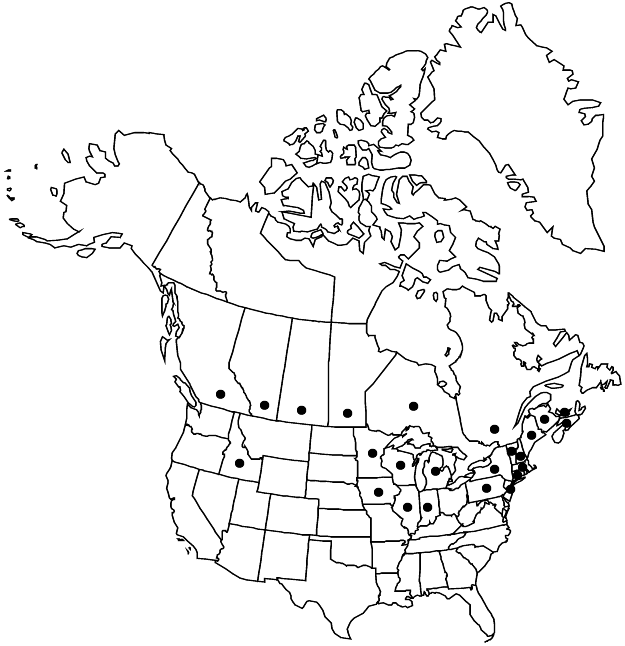Silene chalcedonica
in J. Sturm et al., Deutsch. Fl. ed. 2, 5: 96. 1901.
Plants perennial, coarse, rhizomatous; rhizome branched, stout. Stems erect, few-branched, 50–100 cm, hispid. Leaves rounded into tightly sessile base; blade lanceolate to ovate, 5–12 cm × 20–60 mm, apex acute, sparsely scabrous-pubescent on both surfaces, scabrous-ciliate on abaxial margins and midrib; basal leaf blades broadly spatulate. Inflorescences subcapitate between terminal pair of leaves, 10–50-flowered, congested, bracteate; bracts lanceolate, herbaceous, ciliate. Flowers sessile to subsessile, 10–16 mm diam.; calyx 10-veined, narrow and tubular in flower, clavate in fruit, 12–17 mm, margins dentate, lobes triangular-lanceolate, 2.5–2.5 mm, coarsely hirsute; petals scarlet, sometimes white or pink, clawed, claw equaling calyx, limb spreading, obovate, deeply 2-lobed, 6–11 mm, shorter than calyx, appendages tubular, 2–3 mm; stamens equaling calyx; stigmas 5, equaling calyx. Capsules ovoid, 8–10 mm, opening by 5 teeth; carpophore 4–6 mm. Seeds dark reddish brown, reniform-rotund, 0.7–1 mm diam., coarsely papillate; papillae ca. as high as wide. 2n = 24 (Europe).
Phenology: Flowering summer.
Habitat: Roadsides, waste places, open woodlands
Elevation: 0-300 m
Distribution

Introduced; Alta., B.C., Man., N.B., N.S., Ont., P.E.I., Que., Sask., Conn., Idaho, Ill., Ind., Iowa, Maine, Mass., Mich., Minn., N.H., N.J., N.Y., Pa., Vt., Wis., Europe.
Discussion
Silene chalcedonica is widely cultivated but rarely escapes and probably does not persist.
Selected References
None.